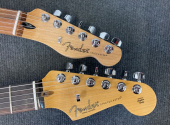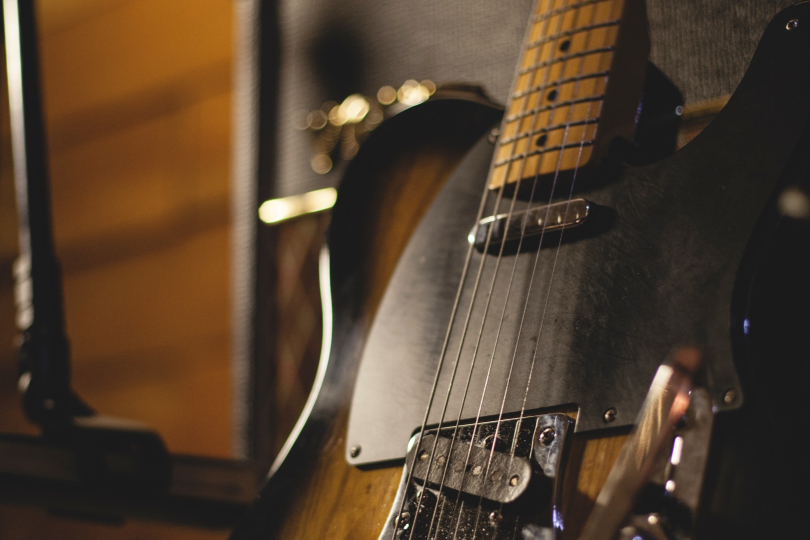
Under the Hood #13: How to Cheaply Upgrade the Electronics in an Electric Guitar
Has it ever occurred to you that upgrading your electric guitar doesn't actually have to be that expensive? Many things can be done cheaply, the magic is in the details. Details, hidden somewhere under the hood, may not seem important at the first glance, yet they are crucial. I've got some tips for you on inexpensive and effective ways to improve the sound and playability of your electric guitar by modifying the electronics.
It's all about guitar service. If you know how to do it and you feel confident, you can try it yourself. If you don't know, find a guitar tech, tell him what you'd like to improve and let him do the work. And if you are one of those people who don't know what they want to improve, don't despair. Discuss everything with the technician, and he'll figure out what your guitar soul craves.
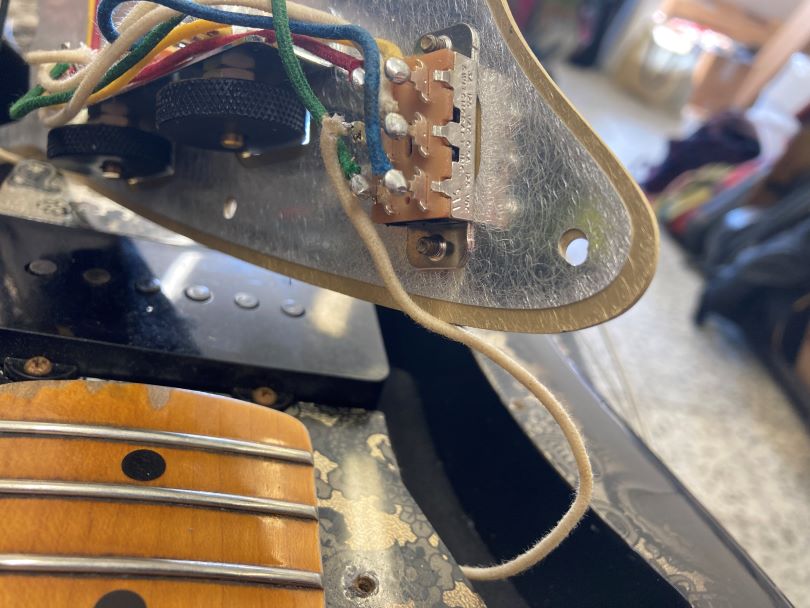
Changing the electronics wiring
Electronics is important in electric guitars, it considerably affects the final sound. Every guitar has some specifications from the factory, such as the number of pickups, the number of pickup switch positions, the number of potentiometers, and then different combinations between these components. The great thing about electronics is that you can reshape it almost endlessly as you please.
Any change of wiring is possible. If you have a Stratocaster, you can choose different combinations of pickups; for example, the bridge and neck pickups can play at the same time in one position of the pickup selector switch. Or all three pickups can play at the same time. You can flip the pickups' phases, and the sound will become much thinner. You can wire the pickups in parallel or in series. With humbuckers, you can use push/pull potentiometers to split the pickups into single coils and plug in different coils and even combine them together.
If you use tone controls, you can choose which ones will be connected to a given pickup. You can wire multiple pickups into one tone pot.
If you do not want the signal to interfere with other components, you can connect the sensor directly to the output jack. This ensures that the sound will match the actual capabilities of the pickup. However, there will be no way to adjust the volume. If you are comfortable with volume correction only, you can connect the pickup to the volume potentiometer and then directly to the output. You can also connect everything by keeping all the electronics options, but for example activating the push/pull potentiometer will let the signal from the pickup go straight to the output jack and into the machine. This bypasses the other components, which will be reconnected when the push/pull potentiometer is deactivated. Some Gibson Les Paul models leave the factory with this wiring option.
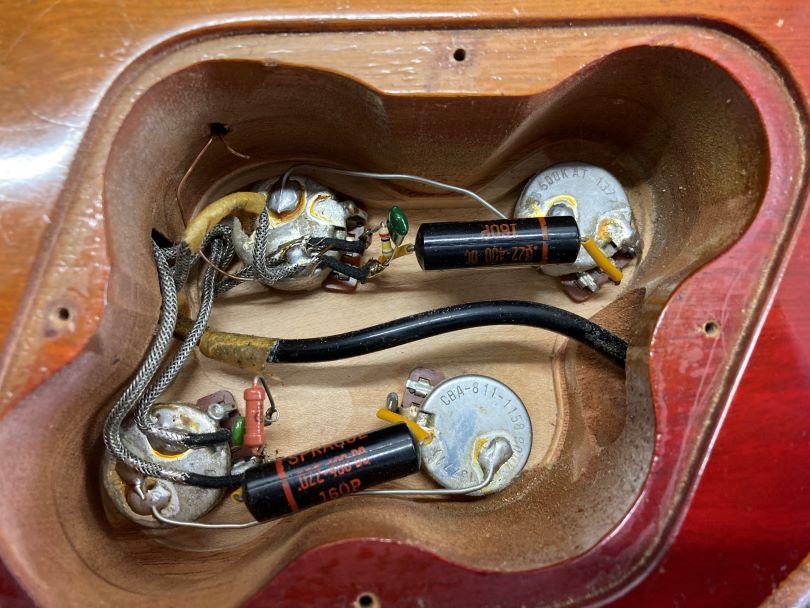
Potentiometers
Another subtle but essential part of the electronics that can be easily tweaked or changed is the potentiometer. There are several types of these and each has a different waveform, that is, it has different properties that modify the sound as it turns.
Logarithmic and linear potentiometers are the most commonly used. The logarithmic one is marked with the letter A (A500k, A250k), its waveform is more gradual at the beginning, but towards the end of the rotation becomes faster. In practice, this means that when you have the volume at zero and start turning the potentiometer slowly, the volume increases smoothly. But as the potentiometer's trajectory approaches the end, the volume jumps to the maximum. This makes it harder to control the volume just below the maximum. On the other hand, if you have the potentiometer at maximum and want to turn the pickup down, the volume can jump to a lower level. The logarithmic potentiometer is used more for the tone.
The linear potentiometer is marked with the letter B (B500k, B250k) and is more commonly used for volume. Its waveform is almost the opposite of the logarithmic one. If you have the potentiometer at zero and start turning it slowly, the volume will increase sharply at the beginning. Towards the end of the track, however, it runs smoothly and you can control the desired maximum volume with more precision.
Therefore, the difference is in the waveform of each potentiometer type and everyone can choose the one that suits them better. You don't have to use B for volume and A for tone. It depends on your preference. A lot of guitarists change the potentiometers on their guitars for the values that suit them best.
Push/pull or push/push potentiometers allow you to switch the humbuckers to single coils, adding several new sound combinations to the guitar. If you have a Gibson Les Paul, which has four classic potentiometers, and you swap them all out for push/pull, you get many more sound combinations.
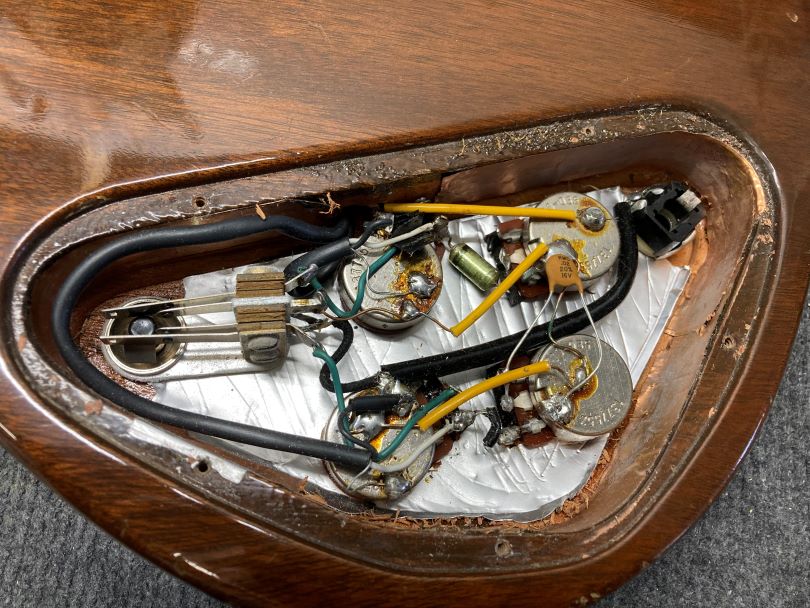
Capacitors and resistors
If you've ever looked into the electronics of an electric guitar, you know that some components are really small. Capacitors and resistors are added to the signal path to modify the sound in various ways—for example, they can add bass. They can be connected to a potentiometer or a pickup switch. There are several types of these and each has slightly different properties.
The use of capacitors and resistors may not affect the resulting sound that much. It depends on what value and wiring you choose. These components are not expensive and take only a few minutes to solder, you just need to know where. A good example is the classic wiring of Fender Esquire, which had only one pickup but a three-position switch. So there were three variations of sound available from one pickup just because of the tiny components in the electronics. In the extreme position of the pickup switch at the neck, the signal travelled through a capacitor and resistor, and the resulting pickup sound was bassier with a lower output.
There is a large number of possible combinations. You need to know a little bit about electronics, or just experiment. Change the component, see if the change in sound suits you and, if necessary, choose a component with a different value next time.
These days, you can find countless wiring diagrams of all possible guitar models on the internet—you just have to do a decent research. In this regard, you can draw inspiration from professional guitarists who use their own specific wiring to achieve their distinctive sound. If you like their sound, find out what wiring they use and what components they have in their electronics.
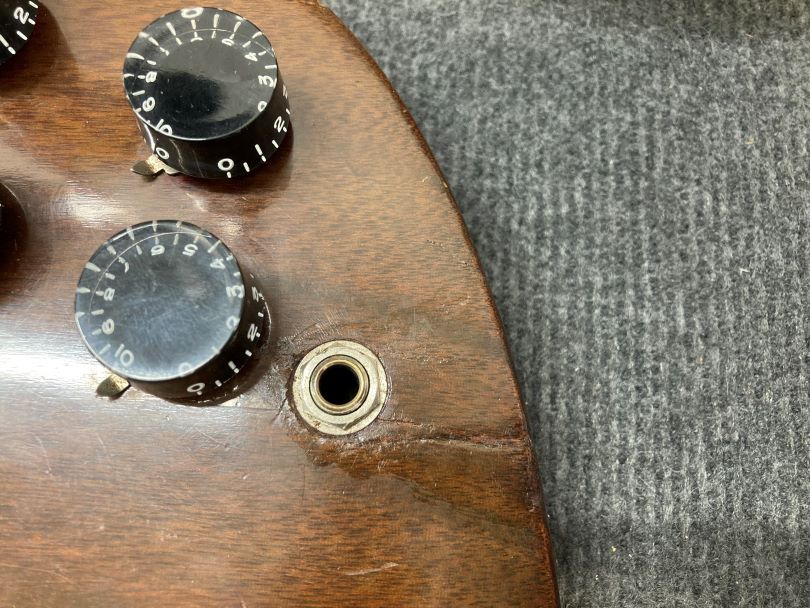
Output jack
The output jack is the most stressed component on an electric guitar. Not only do guitarists constantly plug and unplug cables from the guitar, which already puts a strain on it. Pulling on the cable—for example by stepping on it or moving around the stage, is dangerous for the output. It can get damaged or become too loose, which causes signal interruption or the cable dropping out due to insufficient cable insertion.
For this reason, I recommend having a quality output jack in your guitar, for example from the brand Switchcraft. Cheap guitars, not just those made in China, usually have poor quality outputs. They wear out quickly, they hold cables badly, or quite often their centre construction loosens completely and the whole output jack twists when the nut is tightened.
These components cost a few dollars and take a minimum of time to replace, but they are priceless because they significantly increase the reliability of the entire electronics.
To close
Upgrading electronics does not necessarily mean just replacing pickups. The guts of electric guitars contain many components, each of which plays an equally important role. Everything is connected. You just have to try different combinations and options and look for a better sound. Improvements don't have to be expensive. As Shakespeare might say, you can buy them for a song.
If you have found an error or typo in the article, please let us know by e-mail info@insounder.org.


